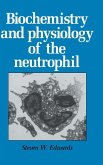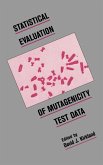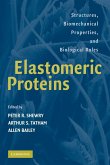A large part of the effort of the food industry is spent in attempting to understand the limitations of the type of food that animals can eat. An understanding of the factors that influence feeding behaviour can then be used to produce foodstuffs that are more attractive to the animal in question, whether it be man, cattle, dogs or cats. This book examines both the texture of food and the adaptations of various animals (including fish, mammals, primates and man) to the type of food they commonly eat. Zoologists, material scientists and food scientists have got together to present for the first time an integrated overview of feeding by vertebrates. The mechanical properties of various foods are considered in conjunction with the mechanics of eating them and more subjective behavioural parameters such as acceptability and palatability. The book consequently will be of interest to food scientists, zoologists and animal behaviouralists.
Table of contents:
1. Mechanical and fracture properties of cellular and fibrous materials G. Jeronimides; 2. Texture of plants and fruits J. F. V. Vincent; 3. Measuring meat texture and understanding its structural basis P. P. Purslow; 4. Food processing by mastication in cyprinid fish F. A. Sibbing; 5. Quantitative aspects of the relationship between dentitions and diets P. W. Lucas and R. T. Corlett; 6. The control of movements and forces during chewing E. Otten; 7. The basic mechanics of mastication: man's adaptive success M. R. Heath; 8. Integrating texture and physiology - techniques D. Kilcast and A. Eves; 9. Brittle textures in processed food A. C. Smith; 10. Soft textures in foods G. Rodger; 11. Texture and acceptability of human foods P. J. Lillford.
The texture of food and the feeding adaptions of various animals are investigated with the intention of enabling the food industry to produce more appetising foodstuffs.
Table of contents:
1. Mechanical and fracture properties of cellular and fibrous materials G. Jeronimides; 2. Texture of plants and fruits J. F. V. Vincent; 3. Measuring meat texture and understanding its structural basis P. P. Purslow; 4. Food processing by mastication in cyprinid fish F. A. Sibbing; 5. Quantitative aspects of the relationship between dentitions and diets P. W. Lucas and R. T. Corlett; 6. The control of movements and forces during chewing E. Otten; 7. The basic mechanics of mastication: man's adaptive success M. R. Heath; 8. Integrating texture and physiology - techniques D. Kilcast and A. Eves; 9. Brittle textures in processed food A. C. Smith; 10. Soft textures in foods G. Rodger; 11. Texture and acceptability of human foods P. J. Lillford.
The texture of food and the feeding adaptions of various animals are investigated with the intention of enabling the food industry to produce more appetising foodstuffs.








